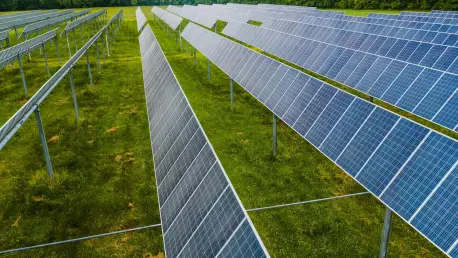Imagine a world where vast solar farms can thrive on rugged, uneven terrain without the need for extensive land modification, preserving the natural landscape while harnessing clean energy at an unprecedented scale. This vision is becoming reality thanks to a pioneering advancement from PV Hardware (PVH), a global leader in solar tracking solutions. The company has redefined industry standards by increasing the slope tolerance between posts in utility-scale solar tracker installations to an impressive 2 degrees, surpassing the conventional range of 1.5 to 1.75 degrees. This breakthrough offers a transformative approach to solar project development, addressing critical challenges like limited land availability and the demand for sustainable construction practices. By enabling installations on more irregular landscapes, PVH is not only enhancing project feasibility but also setting a new benchmark for efficiency and environmental stewardship in the renewable energy sector. This innovation signals a significant step forward for an industry striving to balance growth with ecological responsibility.
Redefining Terrain Adaptability in Solar Projects
The core of PVH’s innovation lies in its ability to drastically improve flexibility for large-scale photovoltaic installations, minimizing the need for disruptive earthworks by up to 90%. This enhanced slope tolerance allows solar trackers to adapt to natural topography, reducing soil disturbance and preserving land for potential future uses, such as in agrivoltaic projects that combine energy production with agriculture. Beyond environmental benefits, the design incorporates shorter posts and shallower driving depths, which simplify logistics and alignment during setup. As a result, installation times can be slashed by over 40%, cutting both material and labor costs significantly. Eduardo Chillaron, PVH’s Global Technical Director, has highlighted this milestone as a testament to pushing engineering limits, enabling clients to tackle projects in locations once deemed unfeasible. Already integrated into the latest tracking systems and deployed globally, this technology proved its immediate impact by streamlining operations and reinforcing solar energy’s role as a sustainable solution across diverse landscapes.









